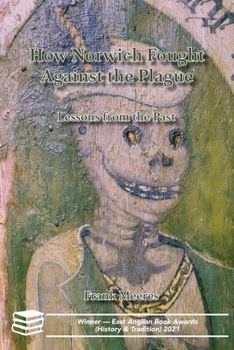How Norwich Fought Against the Plague: Lessons from the Past
The global pandemic of 2020-21 has upset the lives of millions throughout the world bringing into stark reality the fragility of our way of life or even human existence. It has highlighted how well we react in a crisis and how the decisions taken by civic authorities can ensure the safety or otherwise of the population.In this book the author, through a close examination of surviving records from different periods, looks at the outbreak of bubonic plague in the city of Norwich from the first wave in 1348-1349 to its last in 1666-67. Although the words we use today would have seemed strange to the aldermen of Norwich, the reader will find they used now familiar ways of combatting the disease: isolation (both self and imposed), lockdown, shielding of the most vulnerable, movement restrictions, closure of schools and places of entertainment and social distancing. There was also a recognition that certain 'key workers' were needed to ensure society continued to function as normally as possible. While some made fortunes during times of strife, the devastating effect on the economy, with the poorest in society being the worst hit, is perhaps the least well documented. However, glimpses of this economic impact can be seen from the restrictions that were imposed on goods transported from centres of trade such as London and, closer to home, Yarmouth.Some historians argue that plague heralded in seismic changes as a 'new normal' led to rapid social change: this book shows how decisions made at the time affected the city in many ways.
Format:Paperback
Language:English
ISBN:1909796824
ISBN13:9781909796829
Release Date:March 2021
Publisher:Poppyland Pubishing
Length:146 Pages
Weight:0.47 lbs.
Dimensions:0.3" x 6.1" x 9.2"
Related Subjects
HistoryCustomer Reviews
0 rating





